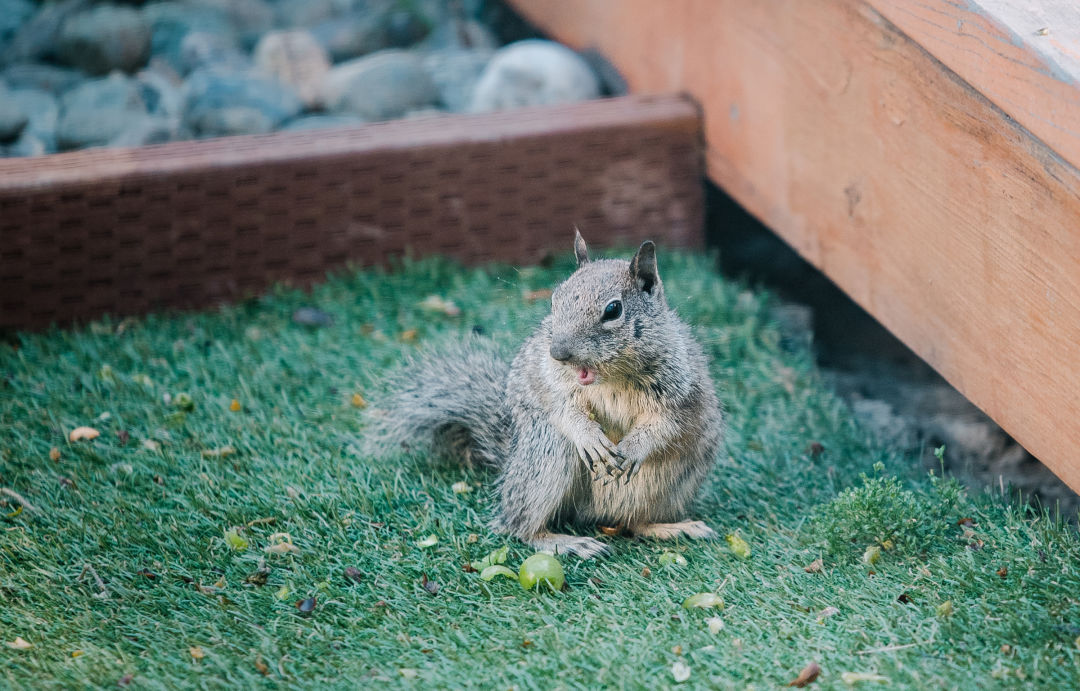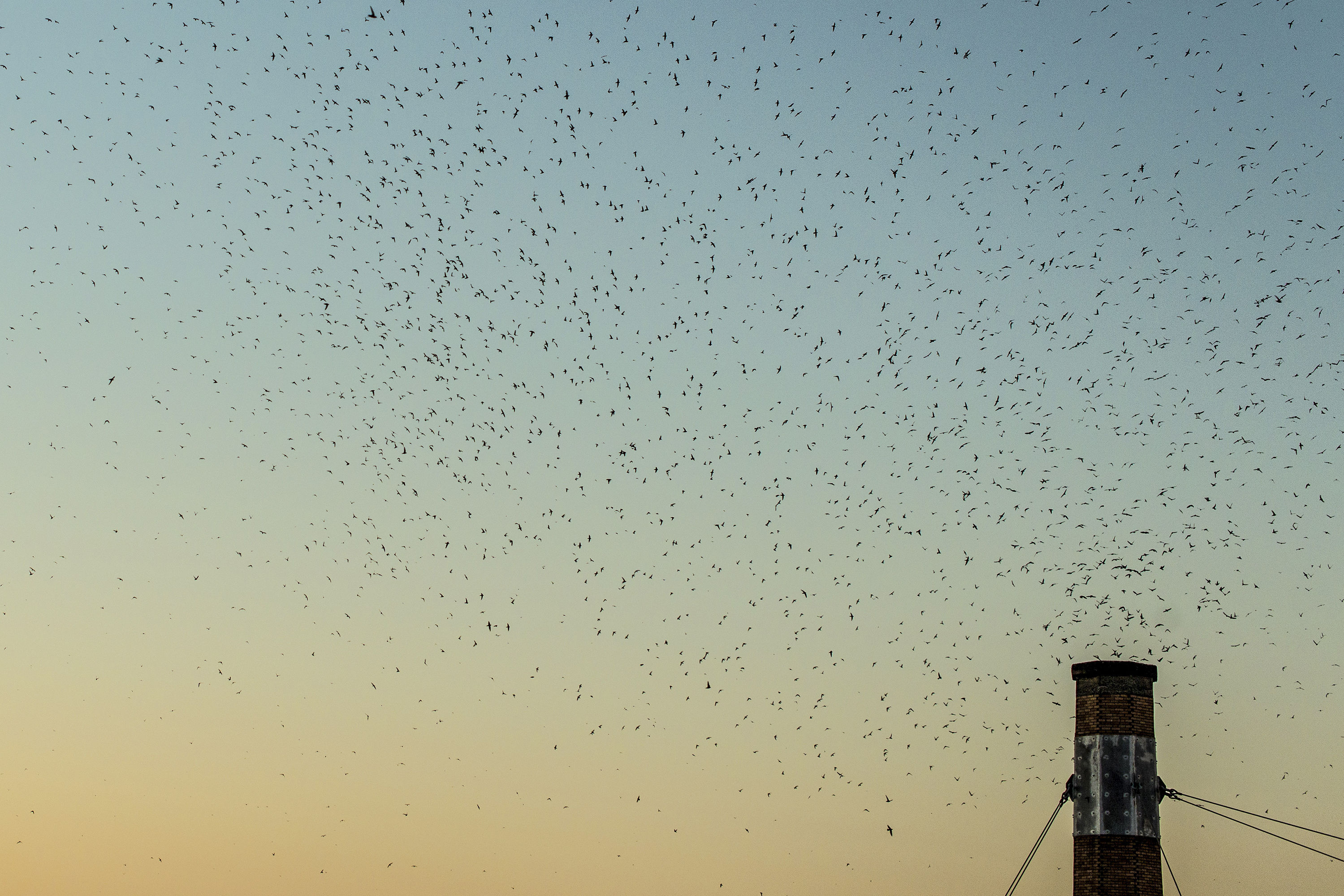The Pandemic, Wild Animals, and You

A crowd-sourced Audubon Society project encourages Portlanders to take note of the wildlife in their yards but not try to interact with them, no matter how much you want to befriend this little guy.
When COVID-19 was just beginning to spike in the US and we started seeing too-good-to-be-true news about swans and dolphins in Venetian canals, my husband said to me, “I wonder if there’s anything like this happening around here.” I wonder, I thought. If there is, someone ought to keep track of it.
It turns out someone is: the Portland Audubon chapter, which is sponsoring a new citizen science project, dubbed the Backyard BioBlitz. It started in April and runs every Tuesday through the end of June. It’s open to people at any skill level (kids welcome), and you can participate once or as often as you’d like.
Here’s how it works: For some portion of a Tuesday, notice wildlife near your home. Then enter your observations into the Google form on the Portland BioBlitz page (at whatever precision level you can; “butterfly” or “big brown bird" is fine). The Bioblitz is focused on observations of wild animals within about a one-block radius of your home; if you have observations on animals in parks, or questions or photos or videos (“I saw a pileated woodpecker! Or I think it was a pileated woodpecker?”), Audubon is also starting a Facebook page where you can share and chat and get questions answered.
What are they expecting to find? “Well,” says conservation director Bob Sallinger, “it’s hard to determine whether the animals are around more because things are quieter, or whether people are noticing them more because they’re home. I suspect it’s both.” The end goal is to help determine which animals are in our urban landscape right now, with a guess at numbers. “I do think the relative quietness of the landscape has an effect on animals,” Sallinger says. “People may be out walking more, sure, but there is so much less vehicular traffic that the overall noise level is down. And that changes the habitat for animals. Even at Audubon, up on Cornell [near the Wildwood Trail crossing in Forest Park], when the street is closed I see coyotes coming out and sunning themselves in the middle of the road. That’s a change. That doesn’t happen when cars are driving by.”
Reduced noise levels may be making animals bolder on the urban landscape and you may be more likely to see a bee swarm in your backyard (and you may be happy about this, unless coyotes have attacked one of your pets or raccoons are raiding your trash). However, COVID-19 has a direct cost not only for humans but also for wildlife and environmental quality: increased human contact is a risky proposition for wild animals, and it is easy to hurt animals unintentionally when trying to help them.
For example, many young birds fledge (leave the nest) on the ground. Their parents care for them while they are learning to fly, but they’re alone for hours at a time. It’s easy to mistake them for injured adults. Even in an ordinary year, when we are not all out taking yet another walk, lots of birds like this (and other baby animals, like fawns, brush rabbits, ducklings, and goslings) get rescue-kidnapped by well-meaning bystanders when their parents were just out getting food.
Your best shot at preventing harm to wild animal populations is to get informed yourself, and then to spread information to others. The key information falls into a fairly straightforward list of do’s and don’ts (thanks to Kurt License, Oregon Fish and Wildlife’s district wildlife biologist for the North Willamette watershed, and to Sallinger for these tips).
Do:
- Pay attention to what you’re seeing. Knowledge is power, both for you and for conservationists, and you can have a real impact on conservation just by knowing your own neighborhood and the animals and plants in our bioregion better.
- Keep your distance. My 3-year-old wants the squirrels to stop so she can pet them. I too have always daydreamed of being St. Francis (although I will not judge you if your compassion does not extend to squirrels). But unless you’re a wild animal care expert, the sad truth is that, for the animals and for you, the healthiest interaction is the least interaction. This is not a good time to need to head to the hospital for a rabies booster.
- Be aware that many young animals (fawns, baby brush rabbits, young birds) may spend hours a day by themselves, either learning to live on their own or waiting for their parents to forage. They are not abandoned.
- If you have time and energy, when you see a waterfowl family navigating traffic as they travel to or from their nest (somewhere quiet, sometimes up to a mile away from water) you can help “make way for ducklings” and protect their path.
- Keep an especially close eye on any pet that could be harmed by predators like coyotes. (Keeping cats contained protects the cats from predators, as well as protecting songbirds from cats; see catssafeathome.org for more information.)
- Check out ways to get involved. Audubon has lots; so does the Forest Park Conservancy.
- Naturescape your yard. (Audubon offers Backyard Habitat Certification.)
- Provide water sources (birdbaths).
- Reduce window strikes.
- Reduce light pollution.
- Avoid pesticides.
- Practice safe bird feeding: feed small amounts, and keep feeders clean. If you see sick birds in your yard, stop feeding for several days.
Don’t:
- Feed animals (except birds in feeders). It is bad for them, because they’ll become dependent on your food and lose the motivation and eventually the skill to find their own. And it can be bad for you, because the animals you attract (or the animals attracted to the animals you attract) may become a nuisance.
- Try to raise a brood of wild ducks, or any other wild animal. This is bad for them because animals raised in captivity (even the most well-meaning captivity) do not do as well in the wild as animals raised in the wild. It is bad for you because wild animals carry a host of parasites and diseases that can be harmful to humans. You are highly unlikely to catch anything from wild animals outdoors (healthy wild animals are great at social distancing), but if you put them in your bathtub it’s a different story.
- Rescue animals who seem to be in trouble, especially uninjured youngsters, unless an expert has confirmed that the animal you’re seeing is actually in need of human care. (Call Audubon at 503-292-0304 to speak to an expert.)
-
Trap and relocate animals during breeding/nesting season as it often leaves orphans behind.




